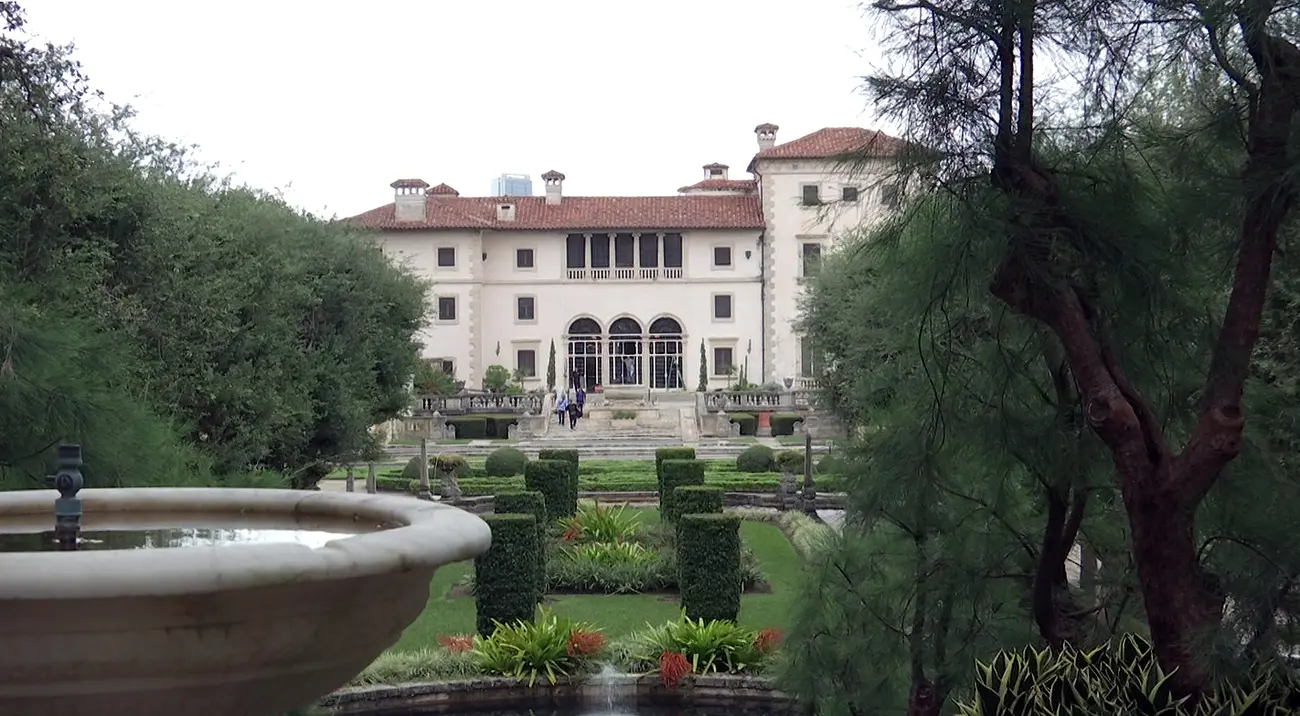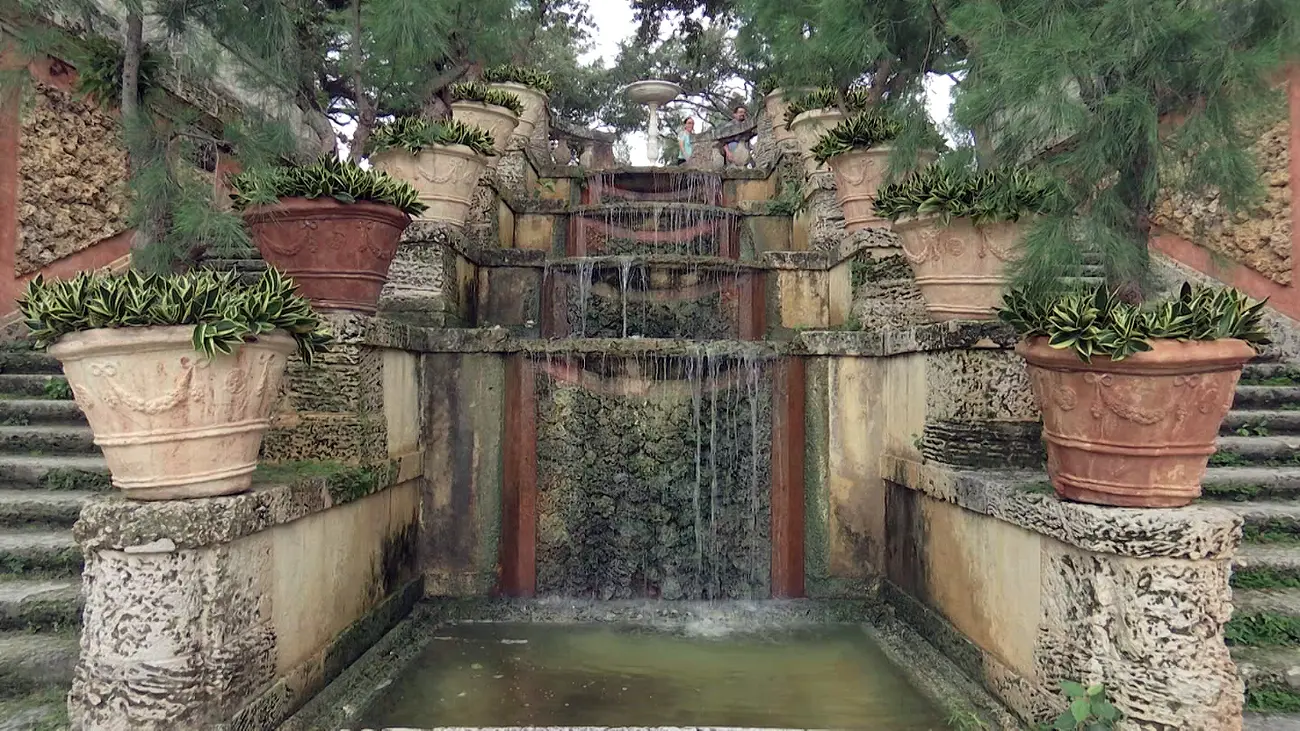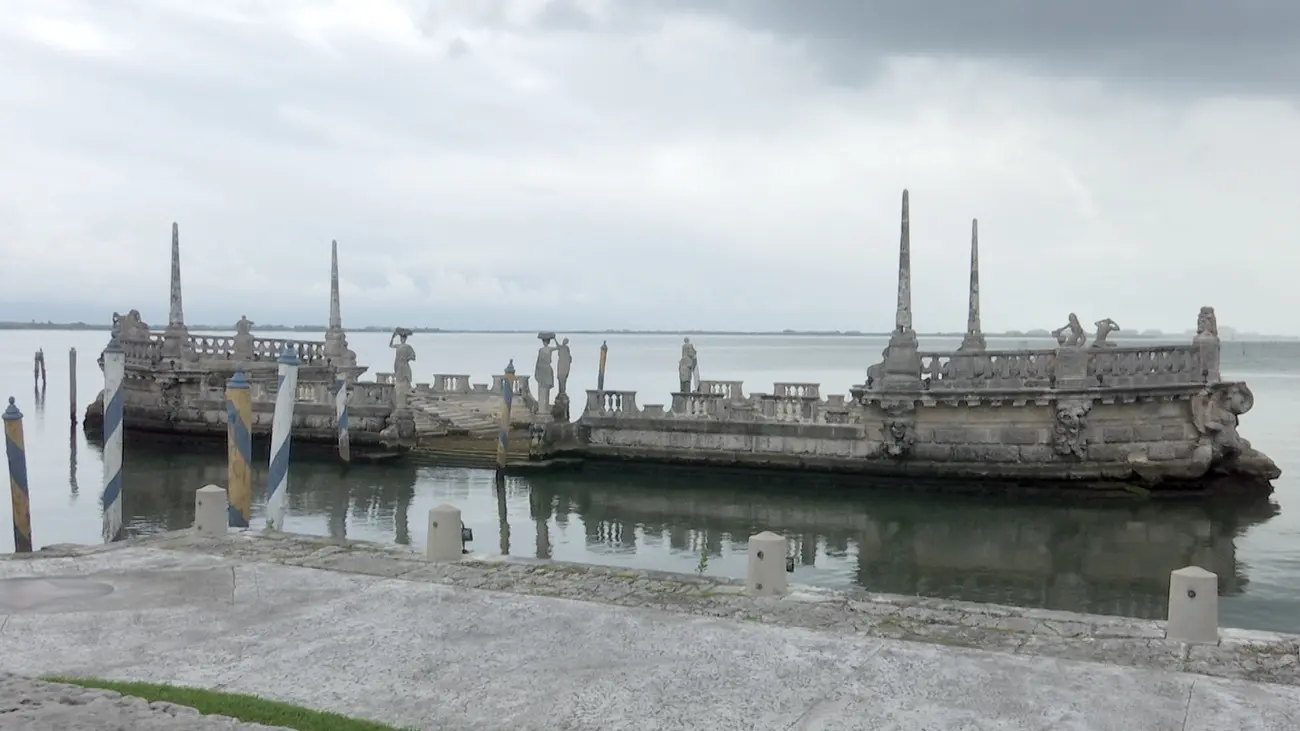Just blocks from the bustling urban setting of downtown Miami is an oasis of Classical beauty in a serene and idealized natural setting.
Known today as Vizcaya Museum and Gardens, the 40 room mansion surrounded by acres of meticulously landscaped gardens was originally the home of industrialist James Deering.
As early as the 1890s, the Deering family started wintering in St. Augustine. James Deering’s parents later moved to Coconut Grove, which would become part of Miami.
“James Deering was what’s known as an agricultural industrialist,” says Mark Osterman, guiding programs manager at Vizcaya Museum and Gardens. “His firm created agricultural farming equipment across the United States. It became one of the largest manufacturing firms in the entire world. He was vice-president of the firm International Harvester.”
In 1908, at the age of 49, Deering retired from the International Harvester Company and initiated plans to create a palatial estate called Vizcaya. Deering’s Gilded Age display of incredible wealth in Florida would rival the San Simeon Castle built by William Randolph Hearst in California.
“It’s really unique,” says Osterman. “It’s Italian inspired mainly on the exterior of the home, but when you’re on the interior, especially in the central courtyard, that has Spanish influence, or what we call Mediterranean influence. The house itself is really an adaptation of European traditions brought to this subtropical climate.”
Construction on Vizcaya began in the fall of 1913, and Deering moved into the home on Christmas Day, 1916. Deering wanted all of the latest technology available incorporated into the home, including a telephone, but he had architect F. Burrall Hoffman Jr. design a structure that appeared to be about 400 years old.
It would take until 1921 to complete the fantastic Vizcaya Gardens.
“The gardens were designed by Diego Suarez,” says Osterman. “He was a landscape architect who worked on the project along with Paul Chalfin, who was chief designer of the overall project. Diego Suarez was Columbian born but an Italian trained landscape architect, so the gardens themselves are deeply influenced by Italian estate gardens ranging from the 1600s to the 1800s.”
The elaborate gardens of Vizcaya express the Classical ideals of balance, symmetry, and rational design. The meticulously manicured shrubbery, trees, plants, and flowers are augmented by man-made structures intended to add to the beauty of the natural surroundings.
“Throughout the gardens there are a series of follies,” Osterman says. “These are sort of unexpected moments. They could be sculptural, they could be a fountain piece, but they typically service as end points or transition points within the gardens. The gardens were designed essentially as outdoor spaces or rooms.”
The biggest and most unique “folly” at Vizcaya is a piece of fantasy architecture sitting in the water in front of the mansion. “The Barge” is a concrete representation of a ship designed to greet visitors arriving to the estate by boat from Biscayne Bay. Deering envisioned what would seem to be the back of his home as the front entrance, facing the water.
“The Barge” was originally adorned with shrubbery and fountains, and had a small summer house on board. Today, the structure is the least well-preserved aspect of the estate.
Deering’s grand attempt to control nature was challenged by nature itself on multiple occasions.
A hurricane in 1926, and two in 1935, severely damaged the estate leading to extensive repairs of the gardens. In 1992, hurricane Andrew impacted the property, particularly the Barge. In 2005, hurricanes Katrina and Wilma further damaged the Barge and caused water intrusion into the home.
Deering did not live to see the destruction to his carefully designed estate.
“He was here less than ten years,” says Osterman. “He passed away during a cruise on his way back from Paris to New York in 1925, which was unfortunate, but he did enjoy his winters here staring from 1916 through 1925.”
In 1951, Deering’s nieces, who were his heirs, sold the Vizcaya estate to Dade County and donated the interior furnishings of the house. The property opened as a museum the following year.
Modern visitors to Vizcaya can be amazed by the excessive splendor of America’s Gilded Age in Florida and contemplate the illusion of control over our natural environment.


